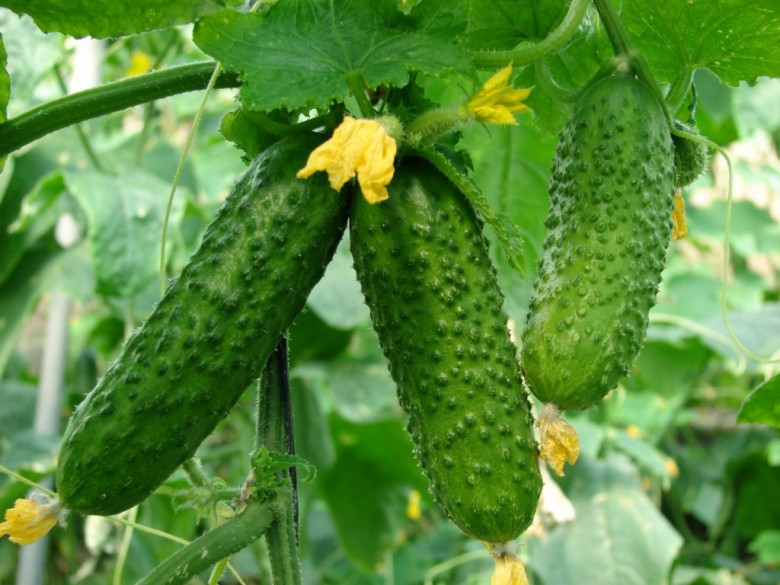
The appearance of a disease such as a black leg on cucumbers is a problem that almost every owner of a garden or garden faces. This disease spreads rapidly throughout the planting and destroys the plants. Therefore, it is very important to quickly respond and take measures to get rid of a dangerous fungus, and in the future to conduct competent prevention of its reappearance.
Content
What is the reason
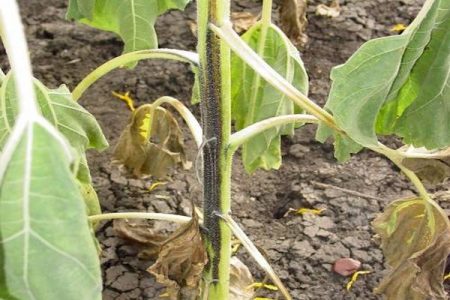
The cause of plant damage is the reproduction of the fungus, not only on the roots, but also in the soil itself. This form is resistant to negative external influences, easily survives even in conditions of nutrient deficiency.
Important!
The fungus can exist for a long time not only in open ground, but also in greenhouse conditions, on organic residues and even on the walls of seedling containers.
The accumulated critical mass of the parasitic fungus leads to the defeat and the appearance of the first visible signs. This occurs due to insufficient care of the soil itself or due to the introduction of infected fertilizer. One of the obvious reasons for the appearance of a black leg on cucumbers is the insufficiently thorough cleaning of containers, the lack of healthy crop rotation and the movement of crops on the site for several years.
The rapid development of fungal disease is always promoted by factors such as:
- excessive watering;
- sudden changes in temperature;
- low temperatures at night;
- not sufficiently loose and fertilized soil;
- low light.
Symptoms
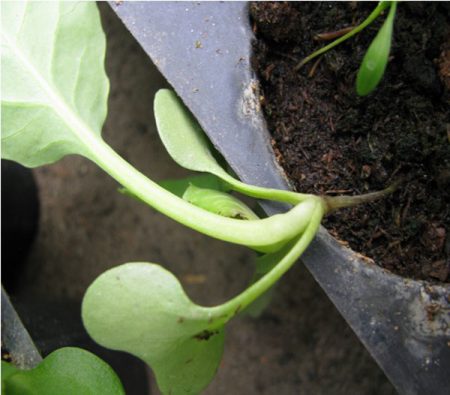
The black leg strikes, first of all, the weakest shoots and the youngest shoots. The development of the first symptoms becomes most noticeable during the appearance of cotyledon leaves and their active development. The initial stage of the disease is characterized by a change in the color of the root neck: it becomes brown, changes its shape, acquiring an obvious constriction. Degenerative processes also occur in the root system: small and young roots turn yellow and thin.
At the next stage of development, the disease affects the cotyledon leaves. They begin to fade, turn yellow, fall off. Another symptom becomes noticeable: the lower part of the root neck becomes wet, changes its color, darkens. As a result, the plant dies completely.
It is possible to understand that the soil in this area is infected before planting seedlings of cucumbers. The black leg affects many flowering plants, including perennials. Levkoy, snapdragon are especially susceptible to fungal infections.
How to treat
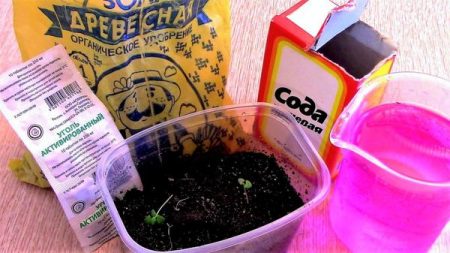
The black leg is the easiest way to deal with preventive methods, but if the disease has already penetrated into the greenhouse or the plot, struck seedlings, it is necessary to destroy the weakest plants along with an earthen lump. In some cases, the fungal lesions are so strong that all the germs become infected, in this case, other measures to combat pathology are recommended.
Change conditions
First of all, the overmoistening of the soil should be completely eliminated and air penetration for active drying should be improved. To do this, you must:
- reduce watering to a minimum;
- add sand to the topsoil or just fill the bed;
- cover crops to protect from the cold.
Important!
Creating an additional layer above the soil, care should be taken to ensure proper drainage and the absence of fluid stagnation, and adequate ventilation.
If the cucumbers are in containers, and the gardener has the opportunity to put them in the greenhouse, cooling of the soil layer under crops should be prevented.This can be done by placing a few cardboard boxes under the box or by placing a folded foam sheet between the bottom and the kidney.
Additionally, you can sprinkle the roots and root neck with dry ash, such a "drying" must be repeated daily.
Carry out processing
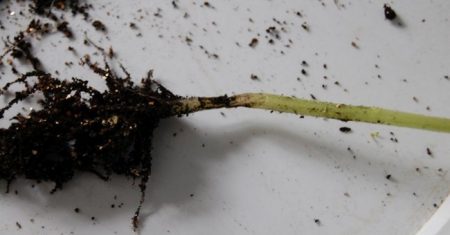
One of the most effective ways to cope with a fungus is to water with special solutions, including:
- a mixture of organic fertilizers;
- Bordeaux fluid solution;
- potassium permanganate concentrate.
Bordeaux liquid is an affordable remedy, at the same time safe for the plant itself and its future fruits. For 1 square meter of cultivated land, 1 liter of solution will be required. The necessary and safe concentration of the active substance is 1 percent. In addition to such treatment, potassium permanganate solutions can be used: for 1 bucket of water, an average of 5-8 liters, add 5-7 grams of the substance. Calculation of the territory should be done in the same way as when using Bordeaux fluid.
After active treatment, it is necessary to maintain the "immunity" of plants, their ability to resist fungal infections. An ash solution is perfect for this. It is necessary to take 2 cups of dry matter, pour a liter of boiled water, not cold. After insisting for 10 hours, dilute with water to obtain 10 liters of the finished composition. Watering in standard moderate mode. Allowed the processing of neighboring crops, which have not yet appeared signs of the disease. Such crops as radish, pepper, cabbage, tomato are especially susceptible to fungal infection of this type.
Important!
The use of active chemicals, ready-made mixtures for treatment is possible, however, such fragile young plants can have a negative effect on fragile young plants.
Resistant varieties
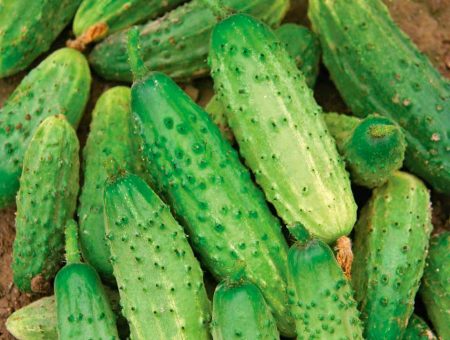
The varieties of cucumbers resistant to fungal diseases include:
- "Goosebump F1";
- "Fontanel";
- "Delicious"
- "April";
- Nezhinsky.
Variety "Nezhinsky" was created specifically for the regions of risky farming. Low temperatures, inadequate lighting, like the black leg, are not afraid of him. Fruits are small, great for canning. They grow both in greenhouses and in open ground.
Hybrid "April" is suitable for the middle zone and southern climate, where it gives its first fruits in April. The main difference is the size of the fruit. Cucumbers longer than 22 centimeters and weighing up to 250 grams are standard for the variety.
The “Delicious” variety is resistant to both high humidity and cold, which makes it immune to most fungal diseases. The main difference is the high sugar content, which gives an unusual taste to the fruits of this variety.
Varieties "Goosebumps" and "Rodnichok" in the form of F1 familiar to experienced gardeners for several decades. They are unpretentious to open ground conditions, easily tolerate heavy and even marshy soils, while giving smooth, medium-sized fruits with large pimples.
Effective prevention
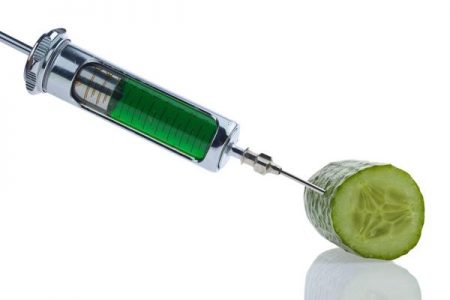
You can avoid infection by choosing the right seedlings and correctly preparing the plants for planting, as well as cleaning the soil from harmful microorganisms. First of all, you should carefully examine the seedlings, if it was bought in the market or in a nursery. If the plant already shows signs of the disease, do not plant it at all. It is recommended to soak the seeds in a weak solution of potassium permanganate, in it you can also wash the roots of purchased seedlings before planting.
Preparation of the land involves the passage of boiling water with potassium permanganate. The solution can be prepared in the same proportions as for the treatment of infected plants. Repeat the procedure several times if infection has already been observed on the site. Similarly, the soil for boxes and containers should also be prepared.
Important!
Special prevention will require acidic soils, which are a favorable environment for the reproduction of all types of fungi. For each square meter of land, add 1 kilogram of lime, mix thoroughly. This will improve the acid balance before planting. Together with lime, you can make ash as a top dressing in the amount of 100 grams per square meter.
Advice
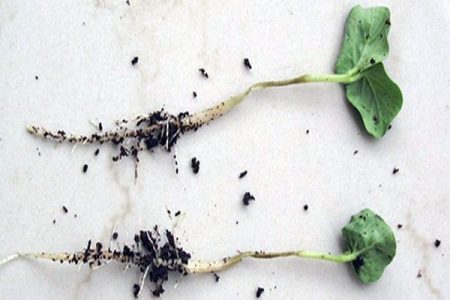
A black leg may appear even when all preventive measures have been taken. To avoid this, a few simple rules should be followed.
- Calculate the accuracy of landing. This is especially true for those who have small areas or plant cucumbers growing vertically. Too dense planting prevents the soil from ventilating and drying out, which leads to the growth of mold.
- Particular attention during the growing of seedlings should be paid to the condition of the soil after irrigation. Light white coating is highly undesirable, as these are the first signs of mold development. You can get rid of this effect by sprinkling soil with ash or by providing better ventilation to the container.
- A few days after planting in the soil, it is recommended to stop watering for 2-3 days, after which loosen the soil without touching the root and spud the plant. In the grooves at a sufficient distance from the stem, watering should be carried out in the next two to three weeks.
The black leg is a dangerous disease that, appearing once, can ruin the crops of several crops during subsequent seasons. But you can fight the fungus even with home remedies, observing the simplest agrotechnical rules.

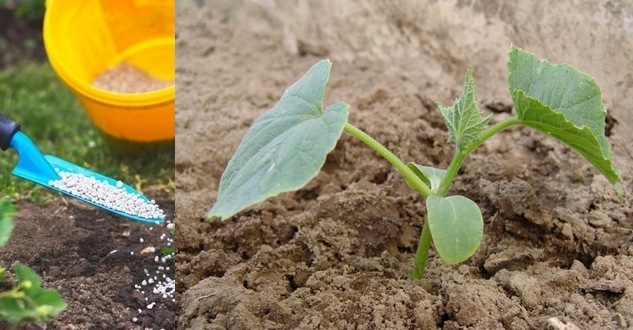
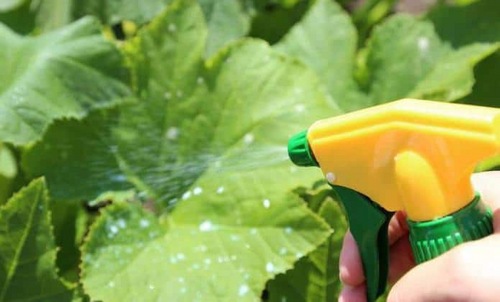
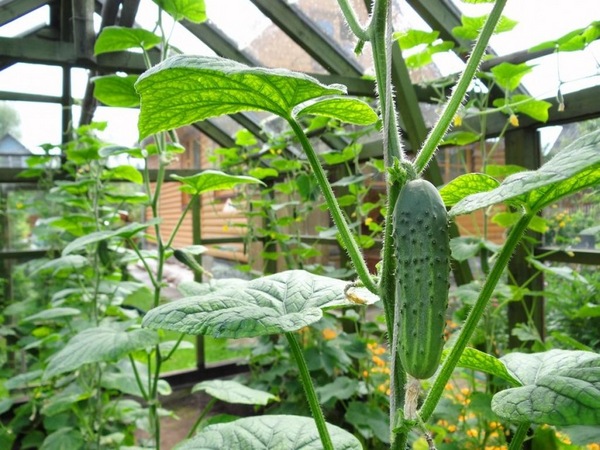
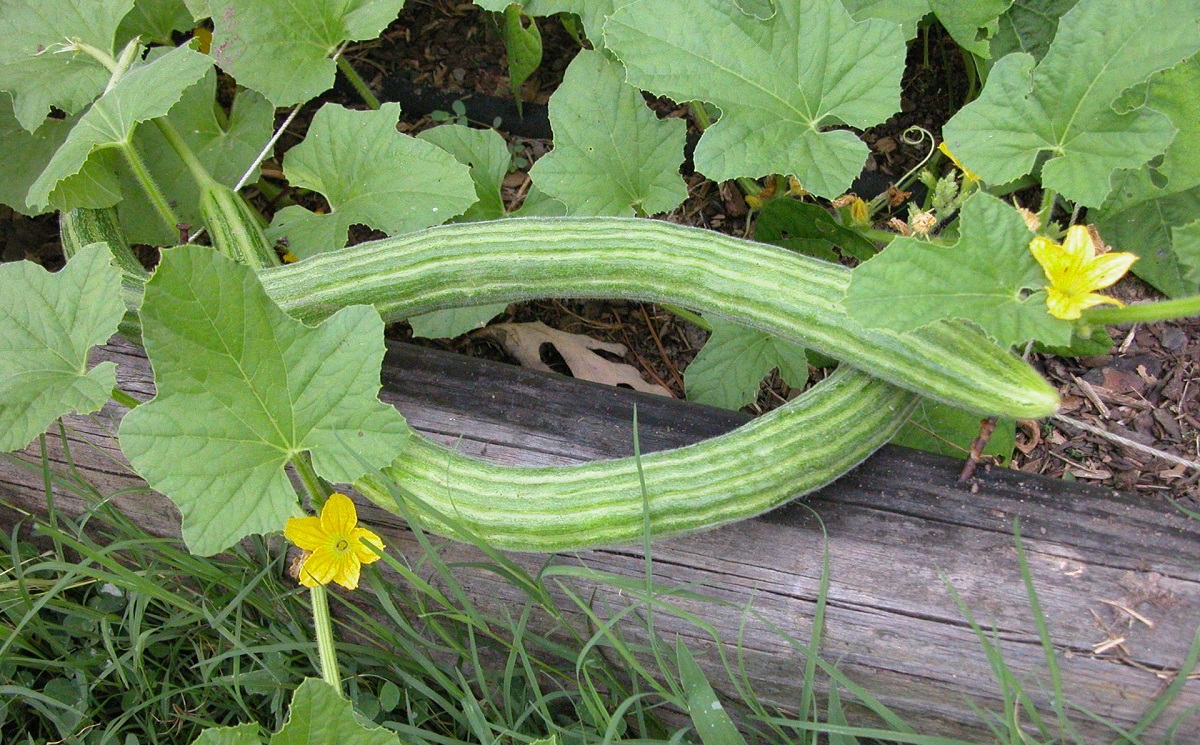 Armenian cucumber with melon flavor: description and characteristics, reviews
Armenian cucumber with melon flavor: description and characteristics, reviews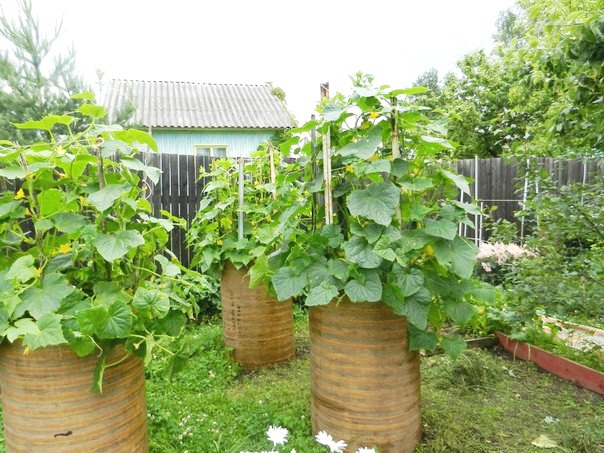 Do-it-yourself vertical beds for cucumbers: schemes, photos
Do-it-yourself vertical beds for cucumbers: schemes, photos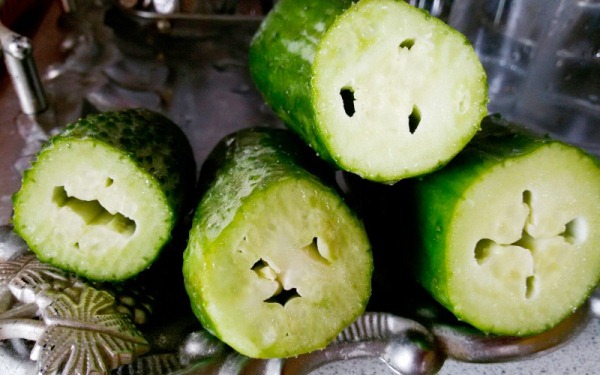 Hollow cucumbers: reasons for the appearance of hollow, what to do
Hollow cucumbers: reasons for the appearance of hollow, what to do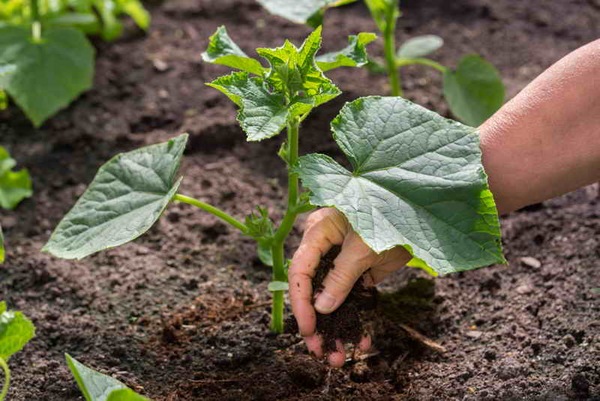 Which manure is best for cucumbers: application, how to breed
Which manure is best for cucumbers: application, how to breed